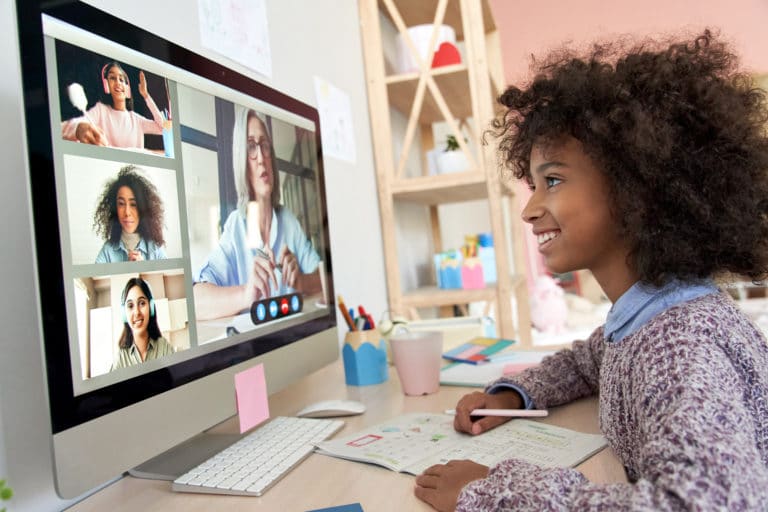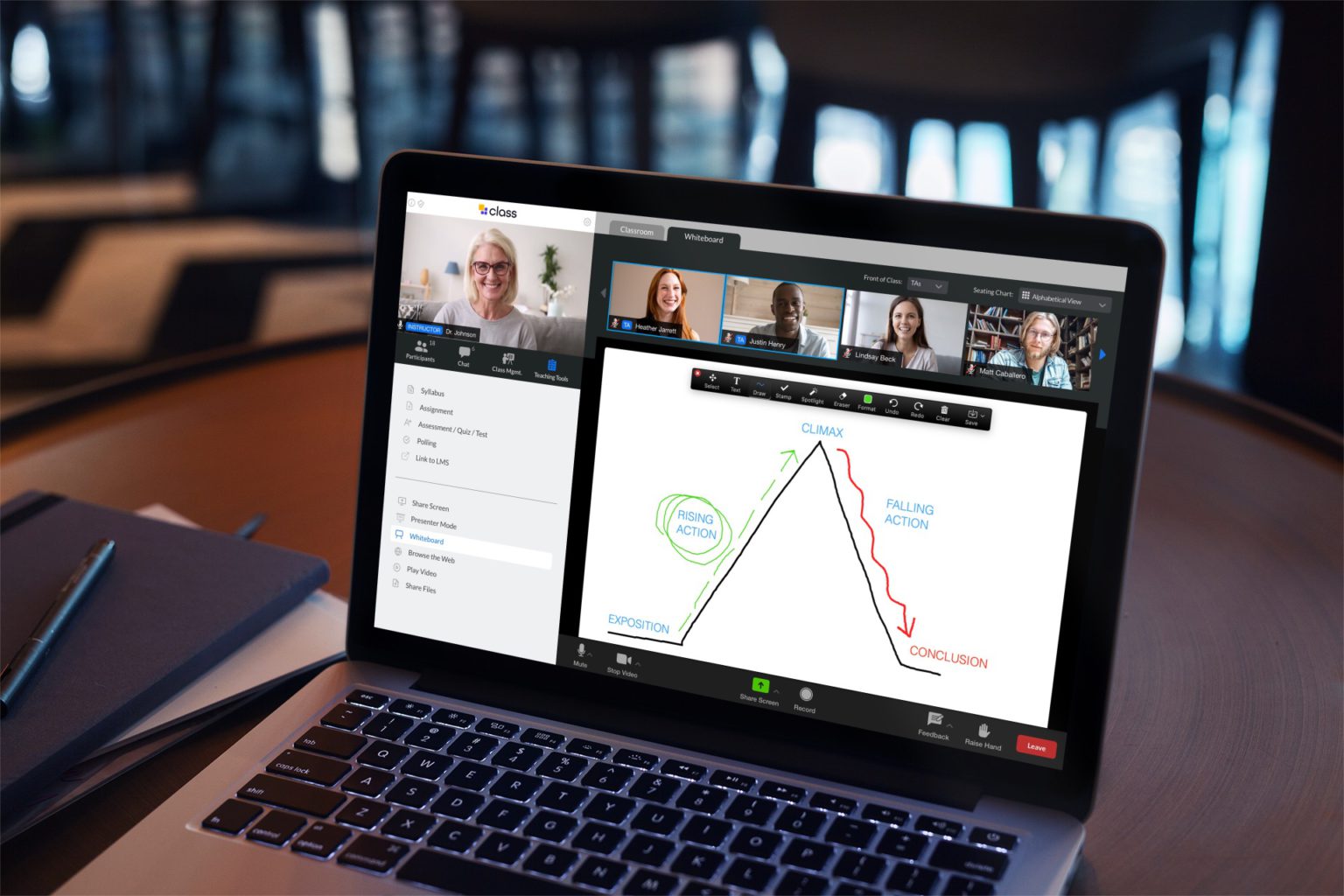
Class is the next generation virtual classroom for K-12, higher education, government agencies, and the workplace. Contact us today to schedule your live demo and see Class in action.

Class is the next generation virtual classroom for K-12, higher education, government agencies, and the workplace. Contact us today to schedule your live demo and see Class in action.

One of the big questions teachers, administrators, and parents had at the beginning of the pandemic was: “How do Zoom classrooms work?” They’ve learned a lot over the past year and have found ways to leverage virtual classroom resources like Zoom to facilitate their virtual teaching.
Zoom started out as primarily a business tool but, since the pandemic and a surge in distance learning it has become a common virtual classroom tool. That’s true both at the higher ed and K-12 levels of education. While higher ed institutions had already been leveraging online learning options, the concept was much newer at the K-12 level. Fortunately, teachers have been able to take advantage of online learning tools like Zoom to bring education into the homes of their students.
Here we look at some tips for teaching hybrid courses using Zoom classroom resources that are now widely available for hybrid learning.
The shift to virtual teaching has not been without its challenges. To find out how to solve those challenges, we asked teachers “how do Zoom classrooms work?”
“Teaching is challenging enough without adding virtual and hybrid methods,” says Carolyn Zerhusen, a certified teacher, and tutor with Maryland Teacher Tutors. “If we as educators feel disconnected from our students when we can only see them on a screen, imagine how the learners must feel.” Still, she says, “there are tools educators can use to promote engagement and connection with students learning from home.” To answer the question “how do Zoom classrooms work” it’s important to understand the features available.
“For maximum effectiveness and engagement, of course, it’s important that classrooms and teachers have the right supporting technology at their disposal to make the most of virtual classroom resources.”

At k12.it, an organization that assists schools with their technology needs, John Fleming, the owner of the firm, says that some common technology they’ve been assisting schools with during COVID to help teachers achieve maximum value for virtual teaching includes:
Teachers are continuing to ask “how do Zoom classrooms work”, learn tips for teaching hybrid courses, and learn techniques that help them understand how to teach with Zoom. By leveraging the virtual classroom resources available to them—including both apps like Zoom and hardware for online learning like cameras and monitors, teachers around the country are overcoming the challenges and reaping the benefit of the new hybrid learning environment.

Class is the next generation virtual classroom for K-12, higher education, government agencies, and the workplace. Contact us today to schedule your live demo and see Class in action.

Class is the next generation virtual classroom for K-12, higher education, government agencies, and the workplace. Contact us today to schedule your live demo and see Class in action.
Get our insights, tips, and best practices delivered to your inbox

Sign up for a product demo today to learn how Class’s virtual classroom powers digital transformation at your organization.

Features
Products
Integrations